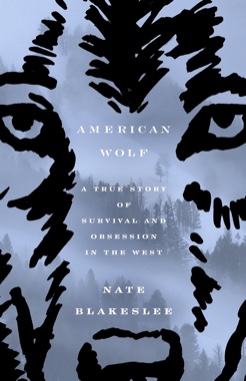December 6, 2012
The hunter left his truck at the end of the gravel road and trudged into the fresh December snow. He was a broad-chested, clear-eyed man of middle age, wearing a brown Carhartt sweat-shirt and heavy winter boots. The snow before him, tinted blue by the soft early-morning light, was crisscrossed with wolf tracks, and he followed them to the edge of an open field. Beyond it, perhaps a quarter of a mile away, was a steep, heavily forested ridge, and to his right another peak loomed, blocking out the morning sun.
On a cord around the hunter’s thick neck hung a brown plastic whistle, shaped like a chess pawn. He put it to his lips and blew a series of short bursts, covering and uncovering the small fluted horn on the end, mimicking the wail of a dying cottontail rabbit. It resembled nothing so much as the cry of a colicky baby, a noise he had not heard in twenty-five years. He waited half a minute, then sent another call floating through the thin mountain air – shrill and defiant at first, then tapering off into whimpering acceptance. You had to make it sound real, that was what most people didn’t understand. Just blasting away on the call like a kazoo would get you nowhere; the trick was to imagine what it would be like to be eaten alive by a coyote, the horror and pain of that kind of death.
And you had to be patient. He’d been stalking the pack for weeks, sighting a wolf or two here and there but never getting close enough for a shot. He’d howled them the night before, using nothing more than his cupped hands and his own voice, and had eventually heard a response. They hadn’t been far, and they weren’t far now. He waited.
His name was Steven Turnbull, and he was in a valley known as Crandall, deep in the Absaroka Mountains northwest of Cody, Wyoming. The Clark’s Fork of the Yellowstone River flowed through a narrow canyon at the western end of the valley, opening up into a wide, flat basin ringed with lodgepole pine, where it was joined by Crandall Creek, cascading down from the mountains bordering Yellowstone National Park. The creek was named for a gold prospector who was killed by Indians while making his way to a promising placer mine near the headwaters of the Clark’s Fork in the spring of 1870. With the nearest settlement at least twenty miles away, the bodies of Marvin J. Crandall and his partner were not found until the following spring, when a search party came upon their severed heads, said to have been mounted on their own picks, on the banks of the creek.
Crandall was still a difficult place to reach, especially in winter. It was served only by a single road, the two-lane Chief Joseph Highway. In summer, the winding road provided a scenic route from Cody through the Shoshone National Park to Yellowstone, which lay about twenty miles west of the basin as the crow flies, over some of the most rugged terrain in the Northern Rockies. In winter, the snowplows went no farther than Crandall’s western edge; travel to Yellowstone required a snowmobile.
